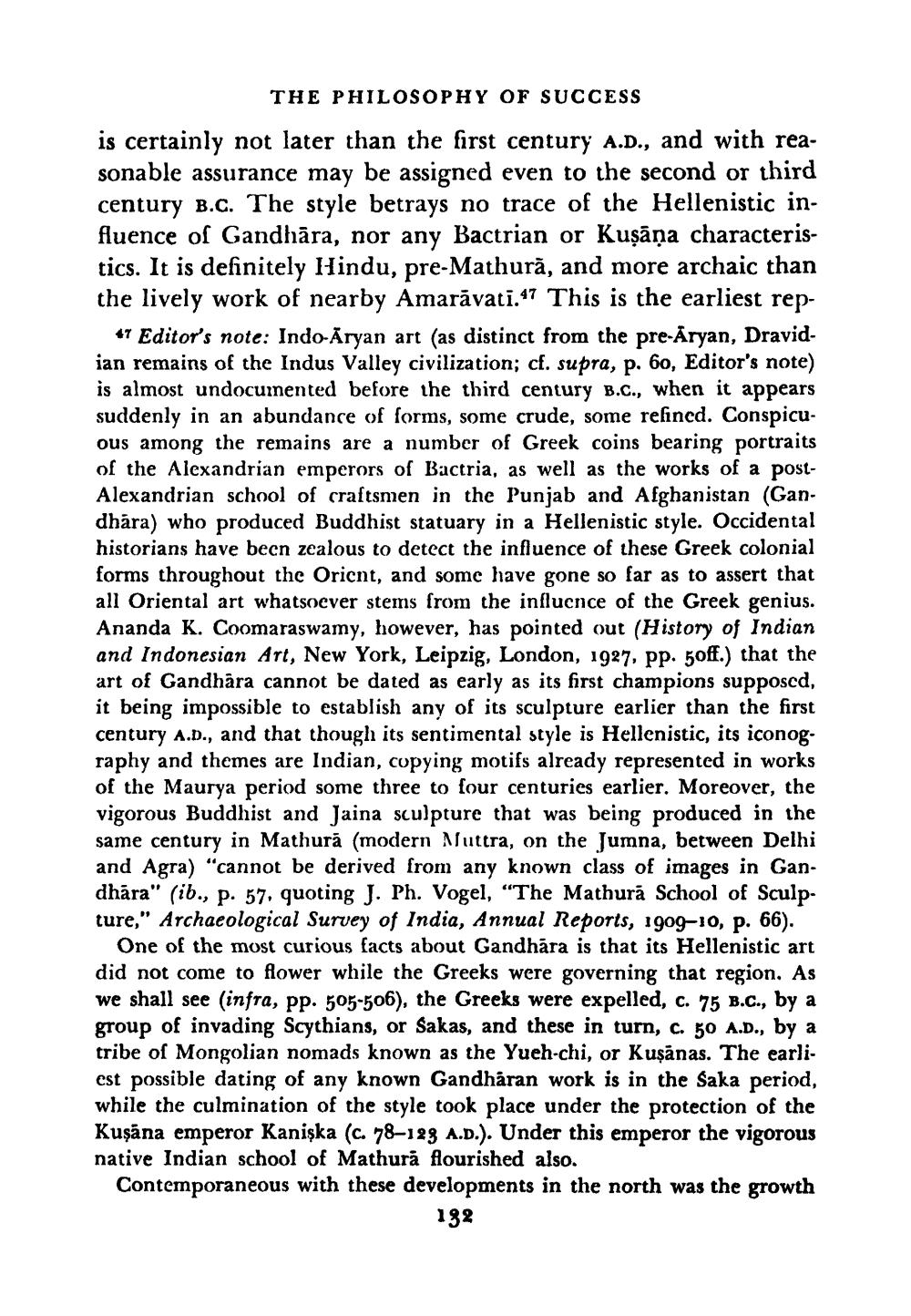________________
THE PHILOSOPHY OF SUCCESS
is certainly not later than the first century A.D., and with reasonable assurance may be assigned even to the second or third century B.C. The style betrays no trace of the Hellenistic influence of Gandhāra, nor any Bactrian or Kuṣāņa characteristics. It is definitely Hindu, pre-Mathura, and more archaic than the lively work of nearby Amaravati.47 This is the earliest rep
47 Editor's note: Indo-Aryan art (as distinct from the pre-Aryan, Dravidian remains of the Indus Valley civilization; cf. supra, p. 60, Editor's note) is almost undocumented before the third century B.C., when it appears suddenly in an abundance of forms, some crude, some refined. Conspicuous among the remains are a number of Greek coins bearing portraits of the Alexandrian emperors of Bactria, as well as the works of a postAlexandrian school of craftsmen in the Punjab and Afghanistan (Gandhāra) who produced Buddhist statuary in a Hellenistic style. Occidental historians have been zealous to detect the influence of these Greek colonial forms throughout the Orient, and some have gone so far as to assert that all Oriental art whatsoever stems from the influence of the Greek genius. Ananda K. Coomaraswamy, however, has pointed out (History of Indian and Indonesian Art, New York, Leipzig, London, 1927, pp. 50ff.) that the art of Gandhara cannot be dated as early as its first champions supposed, it being impossible to establish any of its sculpture earlier than the first century A.D., and that though its sentimental style is Hellenistic, its iconography and themes are Indian, copying motifs already represented in works of the Maurya period some three to four centuries earlier. Moreover, the vigorous Buddhist and Jaina sculpture that was being produced in the same century in Mathura (modern Muttra, on the Jumna, between Delhi and Agra) "cannot be derived from any known class of images in Gandhara" (ib., p. 57, quoting J. Ph. Vogel, "The Mathura School of Sculpture," Archaeological Survey of India, Annual Reports, 1909-10, p. 66).
One of the most curious facts about Gandhara is that its Hellenistic art did not come to flower while the Greeks were governing that region. As we shall see (infra, pp. 505-506), the Greeks were expelled, c. 75 B.C., by a group of invading Scythians, or Sakas, and these in turn, c. 50 A.D., by a tribe of Mongolian nomads known as the Yueh-chi, or Kuşanas. The earliest possible dating of any known Gandharan work is in the Saka period, while the culmination of the style took place under the protection of the Kuşana emperor Kanişka (c. 78-123 A.D.). Under this emperor the vigorous native Indian school of Mathura flourished also.
Contemporaneous with these developments in the north was the growth
132




